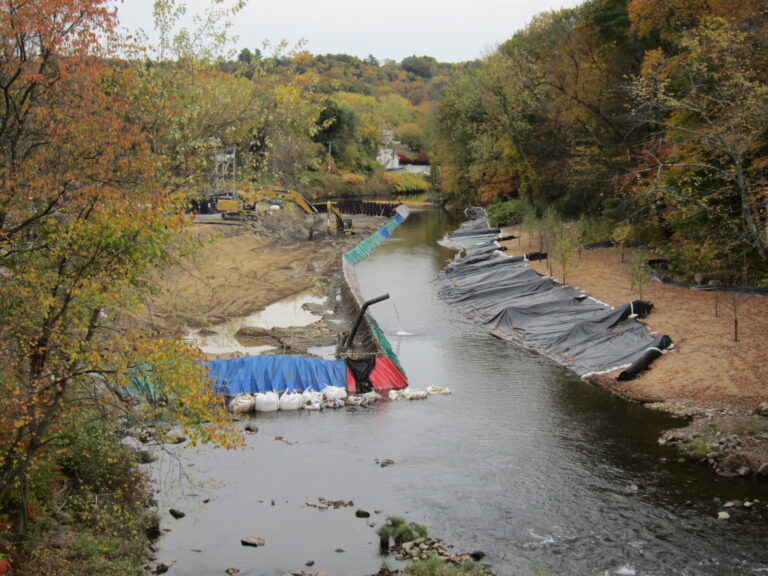Habitat Degradation
Centuries of development along the riverbanks of the Connecticut River and its tributaries has greatly impacted the health of the rivers and the critters that call them home.
History of degradation
By the late 1700s the Connecticut River Valley was becoming an agricultural and industrial center for the United States, providing agricultural products and a budding precision machine industry. The Connecticut River Valley would become one of the four regional centers for the Industrial Revolution in America. With this development, came great impact on the region’s waterways. By the 18th century thousands of mill dams had been constructed along the Connecticut River tributaries, cutting off thousands of miles of spawning habitat for migratory fish. In addition to these dams, heavy industry was quickly developing in the valley and populations were increasing in industrial centers. The 19th and early 20th century saw continuing general prosperity and development in the region.
Industrialization, however, had significant environmental costs, many of which are still visible today. Since the early years of the republic, New England legislatures had passed a series of “Mill Acts” that favored mill rights over farming or fishing uses and overlooked the drawbacks of habitat degradation. The New England states tried to protect fisheries by barring commercial nets in most areas, demanding that industries provide fish ladders, and assuring public access to fish. However, state legislatures showed a clear bias toward industrial over rural uses. From the mid 19th to the mid 20th centuries, industries dumped increasing amounts of pollutants into the Connecticut River, almost wiping out the shad runs and destroying what remained of the salmon runs.
Today, despite the resurgence of a powerful environmental movement in the 20th century and the passage of strongly enforced environmental laws, sewage dumping continues to prove intractable. The river has witnessed dramatic reductions in the dumping of industrial effluent, due to the loss of many kinds of manufacturing in the river valley, but the river continues to face water quality issues today. Main stem and tributary dams are among the major, human-induced contributors to declining migratory fish populations on the Connecticut River. There are 15 dams on the Connecticut River, 12 of which are hydropower projects, and over 1,000 smaller dams on its tributaries. Although some dams are still active, many are obsolete and are considered hazardous to aquatic species and humans alike.
Hydropower impacts
The Connecticut River watershed has dozens of active hydropower dams and two pumped storage projects that are regulated by the Federal Energy Regulatory Commission (FERC). Their individual and cumulative impacts to our rivers are massive. The Connecticut River is one of the most extensively dammed rivers in the nation. All power generation has impacts on the environment. Hydropower has large impacts on a river. Dams on the main stem of the Connecticut River alter flows and water levels on more than 324 miles of the river’s 410 mile total length, from the headwaters region all the way down to Holyoke Dam 86 miles upstream from Long Island Sound. They block the movement of migratory and resident fish and other aquatic animals. The dams turn New England’s longest river into a series of warm water reservoirs. They impede natural river flows and cause the accumulation of sediment behind the dams, burying important river bottom habitat.
